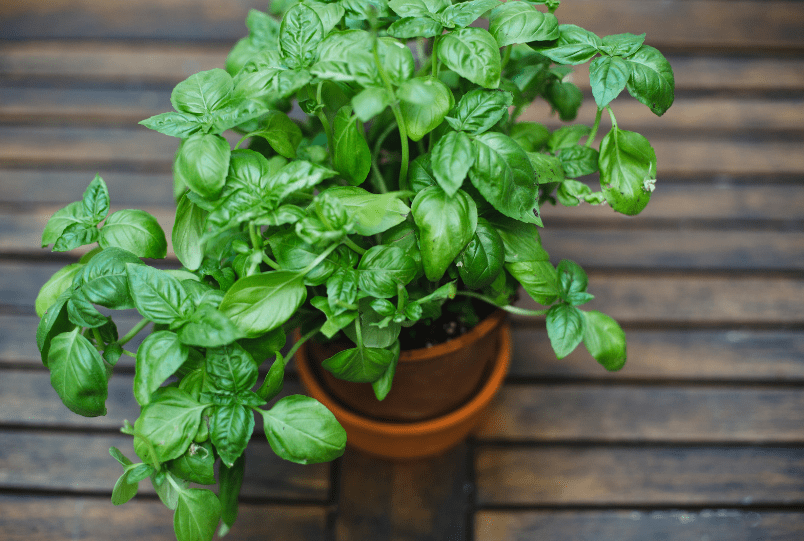
Basil, the king of herbs, is a staple in kitchens worldwide. Its fresh, vibrant flavor elevates everything from Italian classics to summer salads. If you love using basil, have you considered growing and propagating your own? With some know-how, you can have a continuous supply of this delightful herb at your fingertips.
How To Grow Basil At Home
Growing basil is an easy and rewarding gardening project. This aromatic herb thrives in warm locations with well-drained soil.
- Sow seeds directly in the ground after the last frost, or start them indoors 6-8 weeks earlier.
- Space plants 12-18 inches apart and water regularly, especially during hot, dry weather.
- Fertilize occasionally with a balanced liquid fertilizer.
- You can harvest basil leaves throughout the summer by pinching off the top few inches of the plant.
- To encourage bushier growth, pinch back the tips of the stems regularly.
With proper care, basil plants produce abundant, flavorful leaves for various culinary dishes.
Why Propagate Basil?
- Year-round freshness: Don’t limit yourself to store-bought basil or seasonal harvests. Propagating lets you have fresh basil whenever you crave it.
- Cost-effective: A single basil plant can provide numerous cuttings for propagation, saving you money in the long run.
- Variety: Explore the diverse basil world, from sweet Genovese to spicy Thai basil, by propagating your favorites.
Propagation Methods: Your Options
Let’s explore the three main ways to propagate basil:
Water Propagation
-
- This easy method is ideal for beginners. You’ll need a healthy basil plant, a glass jar, and fresh water.
- Step 1: Cut a 4-inch stem below a leaf node (where leaves sprout).
- Step 2: Remove lower leaves, leaving only a few at the top.
- Step 3: Place the cutting in the jar of water, ensuring the leaves stay above the waterline.
- Step 4: Place the jar in a sunny spot and change the water every few days.
- Tip: Roots often appear within a week or two! Once roots are a couple of inches long, pot in soil.
Soil Propagation
-
-
- This method can be slightly faster than water propagation. You’ll need potting mix, small pots, and rooting hormone (optional).
- Step 1: Take cuttings as with the water method.
- Step 2: Dip the cut end in rooting hormone (this step is optional, but it can encourage faster rooting).
- Step 3: Fill pots with moist potting mix, and gently insert the cuttings.
- Step 4: Mist the cuttings and cover the pots loosely with plastic for a greenhouse effect.
- Step 5: Keep in a warm, bright spot and mist regularly. Roots should form in a few weeks.
-
Seed Propagation
-
-
-
- While technically not propagated (since it grows new plants), starting basil from seed is straightforward and a great way to try new varieties. Sow seeds indoors a few weeks before the last frost or directly in your garden when soil has warmed.
-
-
Caring for Your Propagated Basil
- Light: Basil loves sunlight! Give your plants at least 6 hours of direct sun a day.
- Water: Keep the soil consistently moist but not soggy. Allow the top inch of soil to dry slightly between waterings.
- Nutrients: Feed your basil plants a balanced liquid fertilizer every few weeks during the growing season.
- Hydroponics: Consider a hydroponic system for a clean, soil-free way to grow a continuous supply of basil indoors.
Harvesting for Flavor and Growth
- Harvesting Leaves: Don’t just pick individual leaves; harvest whole stems just above a leaf node. This encourages bushier growth.
- Pruning: Regularly pinch back flower buds the moment they appear. This redirects energy to leaf production for a more extended harvest.
Troubleshooting Propagation Problems
- Wilting Cuttings: Ensure cuttings are taken below a node and leaves are kept above the water line in water propagation. Mist soil cuttings regularly.
- Slow Root Growth: Provide warmth and bright, indirect light. Rooting hormone can help in soil propagation.
Beyond the Basics: Layering
This less common method is excellent if you have a mature basil plant:
- Bend a low-growing stem to the soil, pinning it down gently with a wire.
- Cover the pinned section with soil, leaving the tip exposed.
- Keep the soil moist; roots will form where the stem touches the ground. You can then sever this new plant.
Personal Touch: My Basil Adventures
I’ve always had a soft spot for basil. Maybe it’s because my grandmother taught me to make pesto using the lush basil from her garden. One funny lesson I learned was not to plant basil next to tomatoes; my plants tasted like a weird pizza hybrid that year!
Did you know? Basil is said to be a companion plant for tomatoes, supposedly improving their flavor. Perhaps something else was at play in my garden that year!
Conclusion
Whether you’re a seasoned gardener or new to the world of plants, propagating basil is a simple, rewarding project. With a few basic techniques, you can enjoy fresh, homegrown basil whenever you like. Give it a try; you might be surprised how easy it is!
Additional Tips
- Experiment: Try propagating different basil varieties for a burst of diverse flavors.
- Pest prevention: Look for common basil pests like aphids and whiteflies.
- Get creative: Use your fresh basil in delicious homemade pesto, infused oils, or fresh summer salads.


























